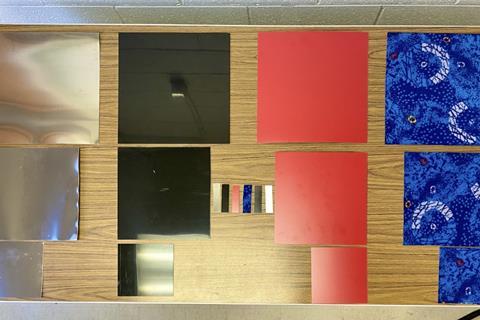Wiping indoor surfaces with a water-dampened wipe removes greater than 80% of Covid virus, yet pre-wetting the surface with water or detergent doesn’t make much difference.
That’s the surprising finding of an evaluation of surface cleaning approaches carried out by the EPA’s Homeland Security Research Program.

The study, ‘Efficacy of Detergent-Based Cleaning and Wiping against SARS-CoV-2 on High Touch Surfaces’, has been accepted for publication in Letters in Applied Microbiology, an Applied Microbiology International publication.
EPA’s Homeland Security Research Program evaluated spray- and wipe-based surface cleaning approaches that are meant to be representative of real-world cleaning activities, for their ability to remove or reduce SARS-CoV-2 virus from common indoor surface types, according to corresponding author M Worth Calfee.
Unexpected findings
“We found that the relative importance of surface pre-wetting, wiping, and use of detergent cleaners was somewhat unexpected,” he admitted.
“Wiping surfaces with a water-dampened wipe was able to remove a majority of SARS-CoV-2 from the surfaces tested. The addition of pre-wetting surfaces with water or detergent solutions did not overwhelmingly improve removal effectiveness beyond the water-dampened wipe alone. The authors caution that such high removal efficacy may not be achieved for all real-world situations however and that although surfaces are clean, it does not mean they are disinfected.
“These results are important for a comprehensive and accurate understanding of surface cleaning meant to reduce exposure to surface-bound pathogens.”
While aerosols are known to be the major route of person-to-person transmission, surface cleaning and surface disinfection are encouraged by EPA and CDC to reduce the risk of surface-mediated exposures.
However, the effectiveness of common spray- and wipe-based surface cleaning approaches are poorly understood for SARS-CoV-2. This study sought to quantify the removal efficacy of such commonly used cleaning methods, ones that would be representative of those used by the public in their homes and businesses,” Dr Calfee said.
Updating guidance
“This information is useful for updating EPA and CDC guidances, in order to help direct the public towards effective cleaning approaches and inform on potential ineffective approaches. These results are also useful beyond the COVID-19 pandemic, to improve reducing exposure to common pathogens and contaminants that can be persistent on surfaces.”
Three basic cleaning methods were evaluated, including wiping of common indoors surfaces (stainless steel, seat fabric, ABS plastic, formica laminate) with (1) a water-dampened wipe (DW), (2) pre-wetting surfaces with a cleaning agent (Tide Original Plus Bleach (Tide) or Dawn Ultra Dishwashing Liquid (Dawn) detergent) by trigger-pulled sprayer and then wiping with a water-dampened wipe (D+DW), or (3) wetting surfaces with water by trigger-pulled sprayer and then wiping with a water-dampened wipe (W+DW).
The EPA found that wiping with a water-dampened wipe (DW) removed between 84% and 99.9% of virus from these surfaces.
The addition of detergent-based cleaners (Dawn or Tide) to surfaces by spray application, before water-dampened wiping (D+DW), did not significantly improve removal efficacy above DW and W+DW in most cases.
The results suggest that several factors impact cleaning effectiveness; surface type, amount of time the contamination has been on the surface, and the cleaning method utilised.
Virus removal
Virus removal from the porous seat fabric was consistently the most challenging (lowest removal) of the materials tested, especially when the virus droplets were allowed to dry on the material for two hours before cleaning.
“The Centers for Disease Control and Prevention (CDC) recommends routine cleaning of frequently touched surfaces to reduce surface-bound pathogens and, accordingly, the risk of surface-mediated disease transmission,” said Dr Calfee.
“This study provides a better understanding of surface cleaning effectiveness. The findings from this study are important for identifying and quantifying the physical and chemical mechanisms that contribute to virus removal and inactivation.
“Cleaning can remove most types of harmful microorganisms - however, disinfection is used to kill microorganisms remaining on surfaces after cleaning. EPA recommends the use of an EPA-registered disinfectant (EPA List N), to reduce SARS-CoV-2, on pre-cleaned surfaces.”
Real world research
More research is now needed to better understand and quantify the aspects of cleaning procedures that contribute to virus removal from surfaces,” Dr Calfee said.
“Information is needed to determine how much volume of cleaning solution should be used over a particular area, how effective different detergent chemistries are at removing virus, how different forces applied or rigorousness of surface wiping impact removal, how different wipe materials may impact removal, and how a different order of operations (wipe then spray then wipe versus spray then wipe, versus spray only or wipe only) effect removal effectiveness,” he said.
“In addition, surface cleaning studies in real-world settings need to be conducted, where recontamination occurs frequently, surface types are varied and are of complex shapes, and native organisms and environmental soils are present on surfaces that can impact cleaning efficacy.”
The views and conclusions contained in this document are those of the authors and should not be interpreted as representing the official policies, either expressed or implied, or providing endorsement of any products mentioned in this report.
‘Efficacy of Detergent-Based Cleaning and Wiping against SARS-CoV-2 on High Touch Surfaces’, is published in Letters in Applied Microbiology.
To read more about EPA’s Research on COVID, go HERE.







No comments yet